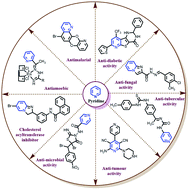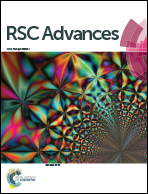Pyridine: the scaffolds with significant clinical diversity
Abstract
The nitrogen-bearing heterocycle pyridine in its several analogous forms occupies an important position as a precious source of clinically useful agents in the field of medicinal chemistry research. This privileged scaffold has been consistently incorporated in a diverse range of drug candidates approved by the FDA (Food and Drug Administration). This moiety has attracted increasing attention from several disease states owing to its ease of parallelization and testing potential pertaining to the chemical space. In the next few years, a larger share of novel pyridine-based drug candidates is expected. This review unifies the current advances in novel pyridine-based molecular frameworks and their unique clinical relevance as reported over the last two decades. It highlights an inclination to the use of pyridine-based molecules in drug crafting and the subsequent emergence of several potent and eligible candidates against a range of diversified diseases.



 Please wait while we load your content...
Please wait while we load your content...